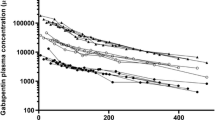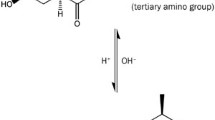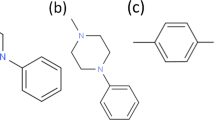Abstract
The contribution of the intestine to the nonlinear absorption of celiprolol in the rat was studied. After intravenous administration of 14C-celiprolol to bile duct-cannulated rats, approximately 9% of the dose was found to be associated with intestinal tissue and its contents. Microhistoautoradiography of frozen intestinal sections showed a time-dependent secretion of celiprolol from the blood into the lumen of the rat intestine. Propranolol, a lipophilic β-blocker, was also found to be secreted into the intestine in vivo and transported in epithelial cells in both a temperature- and a pH-dependent manner, although to a lesser extent than celiprolol. Consistent with the observations in rats, transport of celiprolol from the basal-lateral to the apical side was found to dominate apical-to-basal transport using human Caco-2 cell monolayers. Additionally, using isolated rat small intestinal epithelial cells, celiprolol was found also to have a time- and temperature-dependent uptake, suggesting the involvement of a carrier-mediated system in its uptake. The uptake was inhibited by 2 mM celiprolol and propranolol and was also found to be pH dependent. Saturation of the carrier-mediated secretion of celiprolol in the intestine may result in enhanced absorption of celiprolol at high doses and account for its observed nonlinear absorption.
Similar content being viewed by others
REFERENCES
S.-M. Kuo and J. Ziemniak. The physiological disposition of individual isomers of celiprolol—a new β-blocker. In Proceedings for the Third International SCBA Symposium and Workshop, 1990, p. 323 (abstr.)
U. Sundaram, R. G. Knickelbein, and J. W. Dobbins. PH regulation in ileum: Na+-H+ and Cl−-HCO3− exchange in isolated crypt and villus cells. Am. J. Physiol. 260:G440–G449 (1991).
M. M. Weiser. Intestinal epithelial cell surface membrane glycoprotein synthesis. J. Biol. Chem. 248:2536–2541 (1973).
S. M. Grassl and P. S. Aronson. Na+/HCO3− co-transport in basolateral membrane vesicles isolated from rabbit renal cortex. J. Biol. Chem. 261:8778–8783 (1986).
G. L. Peterson. Determination of total protein. Methods Enzymol. 91:95–119 (1983).
P. Artursson. Epithelial transport of drugs in cell culture. I. A model for studying the passive diffusion of drugs over intestinal absorption (Caco-2) cells. J. Pharm. Sci. 79:476–482 (1990).
P. Artursson and J. Karlsson. Correlation between oral drug absorption in humans and apparent drug permeability coefficients in human intestinal epithelial (Caco-2) cells. Biochem. Biophys. Res. Comm. 175:880–885 (1991).
D. C. Taylor, R. Pownall, and W. Burke. The absorption of β-adrenoceptor antagonists in rat in-situ small intestine; The effect of lipophilicity. J. Pharm. Pharmacol. 37:280–283 (1985).
M. Takano, K. Inui, T. Okano, H. Saito, and R. Hori. Carrier-mediated transport systems of tetraethylammonium in rat renal brush-border and basolateral membrane vesicles. Biochim. Biophys. Acta 773:113–124 (1984).
C. Rafizadeh, F. Roch-ramel, and C. Schali. Tetraethylammonium transport in renal brush border membrane vesicles of the rabbit. J. Pharmacol. Exp. Ther. 240:308–313 (1987).
R. H. Moseley, J. Morrissette, and T. R. Johnson. Transport of N1-methylnicotinamide by organic cation-proton exchange in rat liver membrane vesicles. Am. J. Physiol. 259:G973–G982 (1990).
C. F. George and B. S. Gruchy. Elimination of drugs by active intestinal transport. J. Pharm. Pharmacol. 31:643–648 (1979).
H. Lennernas and C. G. Regardh. Dose-dependent intestinal absorption and significant intestinal excretion (exsorption) of the beta-blocker pafenolol in the rat. Pharm. Res. 10:727–731 (1993).
F. S. Caruso, H. D. Doshan, P. H. Hernandez, R. Costello, W. Applin, and E. S. Neiss. Celiprolol: Pharmacokinetics and duration of pharmacodynamic activity. Br. J. Clin. Pract. 39(Suppl. 40):12–16 (1985).
K. Turnheim and F. Lauterbach. Interaction between intestinal absorption and secretion of monoquarternary ammonium compounds in guinea pigs—a concept for the absorption kinetics of organic cations. J. Pharmacol. Exp. Ther. 212:418–424 (1980).
S. Hsing, Z. Gatmaitan, and I. M. Arias. The function of Gp170, the multidrug-resistance gene product, in the brush border of rat intestinal mucosa. Gastroenterology 102:879–885 (1992).
Author information
Authors and Affiliations
Rights and permissions
About this article
Cite this article
Kuo, SM., Whitby, B.R., Artursson, P. et al. The Contribution of Intestinal Secretion to the Dose-Dependent Absorption of Celiprolol. Pharm Res 11, 648–653 (1994). https://doi.org/10.1023/A:1018959809352
Issue Date:
DOI: https://doi.org/10.1023/A:1018959809352




